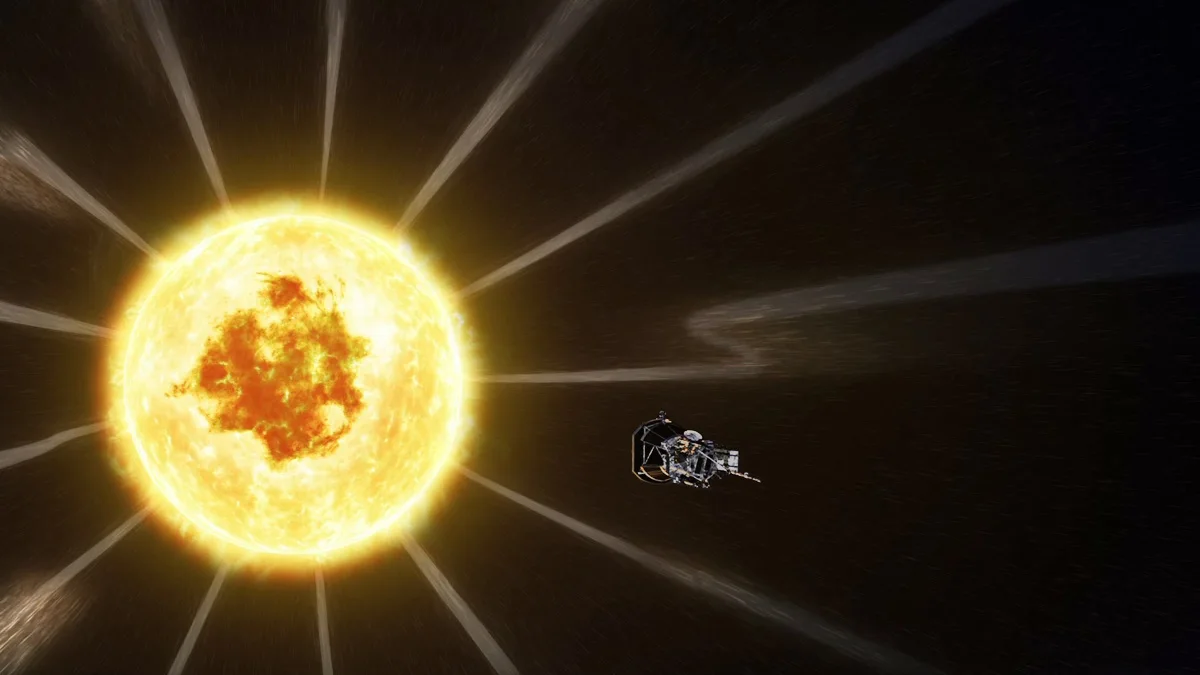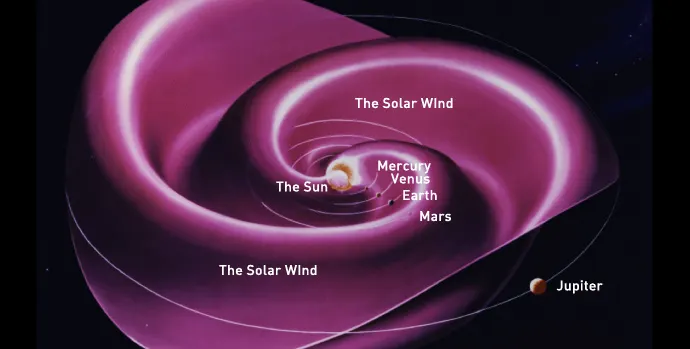
NASA's Sun-diving spacecraft maps out surprising solar wind science
Diving nearer to the Sun than any spacecraft before, the Parker Solar Probe is showing that the solar wind is far more complex than we thought
This week, scientists working with NASA's Parker Solar Probe mission reported the first science returns from the spacecraft after its first three close-passes around the Sun.
What they revealed is that the processes going on in the solar corona and solar wind are far more complex than our view from Earth has shown us.
"The Sun has fascinated humanity for our entire existence," Nour E. Raouafi, project scientist for Parker Solar Probe at the Johns Hopkins Applied Physics Laboratory, said in a NASA press release. "We've learned a great deal about our star in the past several decades, but we really needed a mission like Parker Solar Probe to go into the Sun's atmosphere. It's only there that we can really learn the details of these complex solar processes. And what we've learned in just these three solar orbits alone has changed a lot of what we know about the Sun."
The solar wind is a flow of charged particles from the Sun that streams out into the solar system. Taking the form of a giant magnetic 'pinwheel', the solar wind has alternating 'ribbons' of faster and slower currents in the flow. As this flow passes Earth, it can cause vibrant aurora displays and, at times, it can even have impacts on our technologies and power grids.

An idealized view of the solar wind as it streams away from the Sun. The three purplish lobes represent regions of the solar wind that are denser and slower moving. The 'open' regions in between are regions where the flow is faster and less dense. Credit: NOAA
Our view of space weather from Earth is fairly limited, however. Satellites snap images of activity on the Sun's surface and in the space environment directly around the Sun. Other spacecraft act as 'space weather stations', monitoring the solar wind from a point in space a million and a half kilometres closer to the Sun than Earth.
While this all provides us with invaluable information about what's going on with the Sun, the Parker Solar Probe is showing us that we are not getting the whole story.
From here at Earth, the solar wind appears as a fairly uniform flow, with some upticks in the flow's speed at times, and the occasional solar storm passing by. Our view is missing out on the much more dynamic and turbulent activity of the solar wind closer to the Sun, though.
It's a bit like standing on a beach when there is a hurricane skirting by out to sea. The winds are calm and the sky is clear over your head, but meanwhile, just a few hundred kilometres out from the coast, a fierce storm is raging, with turbulent winds, lashing rain and heaving waves.
NASA's Parker Solar Probe is 'diving into the heart of the storm', so to speak, similar to how meteorologists fly planes into hurricanes to take more detailed measurements of the storm.
From its closer vantage point, the spacecraft is capturing eruptions from the Sun that are far too small for us to see from Earth. It is also taking measurements of the rotation of the solar wind, as the flow is dragged around by the Sun's magnetic fields. Once the flow reaches Earth, it is more or less flowing directly outward, so this is a first for space weather scientists. The probe even made the very first observations of the 'dust free zone' directly around the Sun, where debris left behind by comets has been vapourized.
Parker Solar Probe's instruments also picked up something very surprising about the solar wind closer in to the Sun. Rather than finding a smooth, consistent flow streaming away from the Sun, it detected two unexpected phenomena.
First, it discovered what can only be described as 'switchbacks' in the flow.

In this artist's rendition, streams of the solar wind flow away from the Sun. Portions of the stream form 'switchbacks', where the magnetic field suddenly reverses direction for a short period of time - seconds to minutes. The Parker Solar Probe flew right through one of these switchbacks (inset). Credit: NASA/Goddard/CIL/Scott Sutherland
Basically, as the charged particles of the solar wind stream away from the Sun, they move along magnetic field lines embedded in the flow. At certain points in the flow, however, the magnetic field appears to suddenly 'double back' on itself for a brief amount of time before reversing direction again. The 'switchbacks' continue to flow along with the wind, and they may even help to accelerate the flow away from the Sun.
Second, as the probe swung around the Sun, matching speed with the rotation of the surface, its cameras were able to track material streaming out of a small coronal hole. Coronal holes are openings in the Sun's magnetic field at the surface, which allows material to flow away at a faster pace.
Rather than a steady flow of particles, the instrument saw that material was being emitted in intermittent short blasts.
In the above video, the Sun is located off the left side of the camera view as the camera peaks around the edge of the probe's heat shield. With direct light from the Sun effectively blocked, the probe images the bright material leaving the Sun (streaming from left to right), against the dark backdrop of space. In the background, stars and the Milky Way are visible.
All of this turbulent, energetic activity is lost in the flow by the time it passes Earth, as everything smoothes out over the 1.5 million kilometres it travels to reach here, or it is far too small to be picked up by satellites in Earth orbit.
"This first data from Parker reveals our star, the Sun, in new and surprising ways," Thomas Zurbuchen, associate administrator for science at NASA Headquarters in Washington, said in a press release. "Observing the Sun up close rather than from a much greater distance is giving us an unprecedented view into important solar phenomena and how they affect us on Earth, and gives us new insights relevant to the understanding of active stars across galaxies. It's just the beginning of an incredibly exciting time for heliophysics with Parker at the vanguard of new discoveries."
Source: NASA











